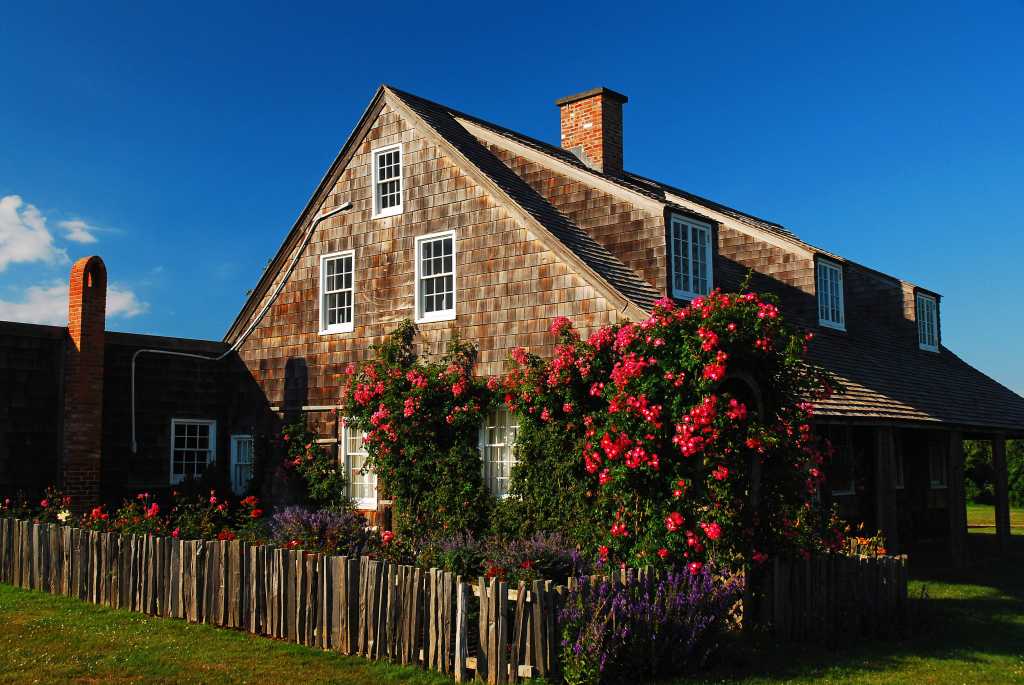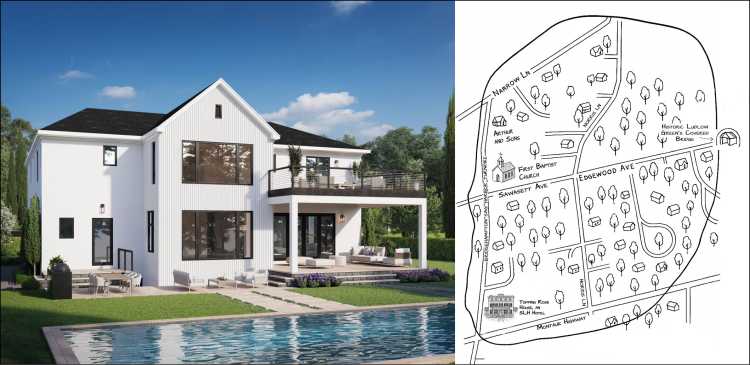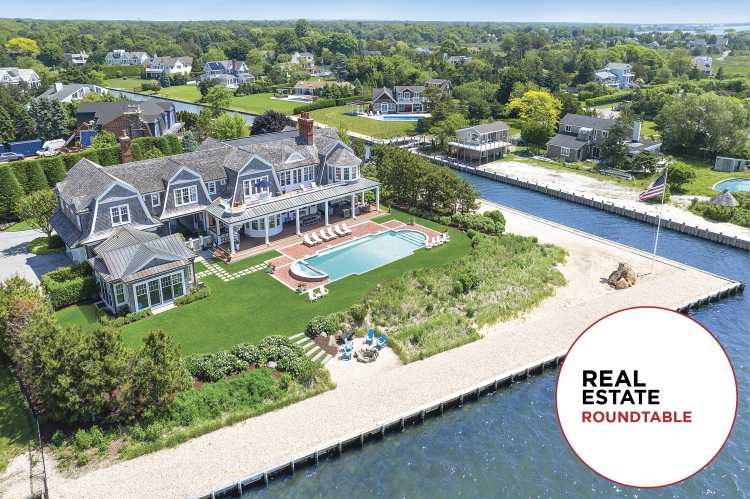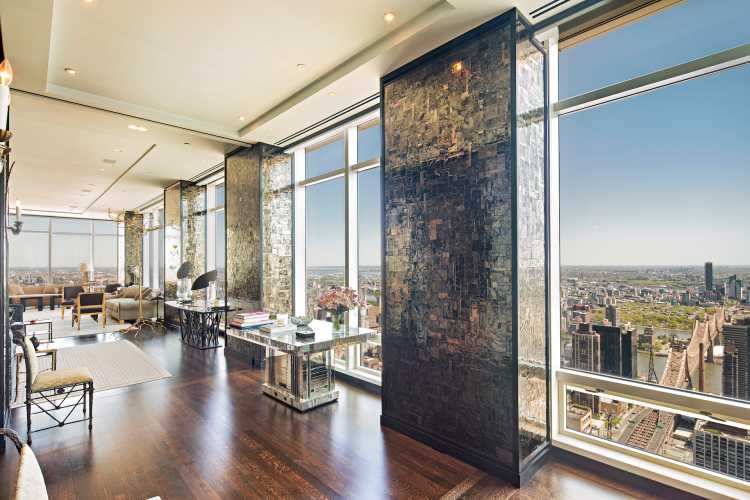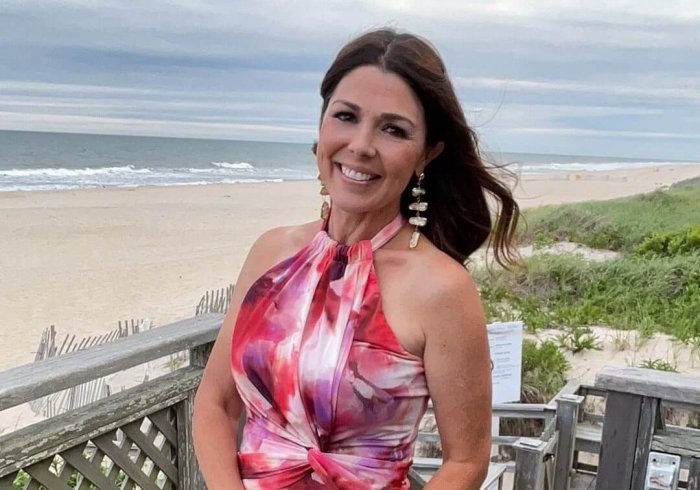The oldest house in Montauk has been showing its age lately. Second House, by Fort Pond on the entrance to town, was suffering from serious structural problems and dangerous mechanicals. A museum now, it’s been closed to the public while a program of conservation and renovation is carried out. phase one of a three-phase plan is underway. Fortunately, a good deal of the original structure is intact.
The plan, says Robert Hefner, East Hampton historical preservation consultant, is to restore the building to its 1880 form. Later additions are not historically important, and earlier versions of the house, he says, “are simply not as well documented. We have a lot of photographs of the house around 1880, so the rebuild will be authentic.”
First House, Second House and Third House were literally the only buildings in Montauk for 150 years, save the lighthouse, the two life-saving stations (Ditch Plain and Hither Plain), and a few fishing shacks. All three were built in the 1740s to accommodate the shepherd and cattle drovers who went “on” Montauk in the spring and “off” Montauk in the autumn. All three buildings burned down.
Today, the drive from Montauk to East Hampton might take 25 minutes by car. But in 1750, the journey to Montauk took six and a half hours by horse-drawn wagon. (This writer’s grandmother remembered how long, hard and “bumpy” the road to Montauk was, even in the 1910s in a Model T.) No surprise that pretty much no one was eager to go to Montauk back then.
The keeper of First House kept track of all the livestock entering at the first gate. The keeper of the Second House minded the sheep (Shepherd’s Neck, near Second House, retains its name), and the keeper of the Third House looked after the cattle and horses. The area was considered a paradise for livestock, with few insects, plenty of grass and many freshwater ponds.
First House was rebuilt in 1798, burned again in 1909, and was not rebuilt. (The Montauk Fire Department was founded in 1939. (Not much anyone could do when a building burned in Montauk before that.) The location of First House is off Old Montauk Highway after the fork, close to where Hither Hills State Park is today. Only a few stones remain from the foundation.
Third House fared better. Rebuilt in 1806, it was eventually used by Arthur Benson as his residence after he purchased almost all of Montauk in 1879. Later, in 1898, it was used by Theodore Roosevelt and the Rough Riders when they were quarantined in Montauk following their return to the U.S. after fighting the Spanish in Cuba.
Second House was rebuilt in 1797. According to the East Hampton Town Trustees’ Journals, the town allotted “three gallons of rum to raise the house at the Fort Pond.” (Raising the roof is thirsty work, folks.) Second House is therefore the oldest house in Montauk.
Arthur Benson made some alterations to Second House after his purchase, but the use of Montauk for grazing went on. Instead of farmers paying the East Hampton Proprietors for grazing rights, they paid Benson. However, after Benson’s death in 1889,, large tracts were sold by his heirs, and The Brooklyn Daily Eagle complained a few weeks later that “little hope of using Montauk as a grazing field for the cattle of Long Island is held by the farmers, and the beautiful grazing territory which has been in use as such for nearly two and a half centuries will have to be relinquished.”
By 1912, Second House’s next use was as a summer home. Owned by the Kennedy family, the house was also rented out. (This writer’s mother recalls visiting in the 1950s when the house was leased by Fred Allen, the famous comedian. She remembers her first time ever eating spaghetti there.)
In 1968, the Kennedy family sold the property to the Town of East Hampton for $75,000. It opened as a museum operated by the Montauk Historical Society the next year. Eighteenth-century features that still exist include the kitchen fireplace, a spinning wheel, a borning room, and a very steep stairway to the five bedrooms on the second floor. The building also contained the first Montauk schoolhouse, which was used for two years before Hither Plain School was built in 1899.
Right now, says Hefner, “Phase one of the restoration work is underway. It’s about 30% done and includes work to the foundation and the first floor framing. They’re adding new foundation and reinforcing existing foundation. Replacing wooden sills because most of them are rotten.”
The next phase, which will soon be put out for bids, will focus on the exterior, while the third and final phase will be the interior and mechanicals. There is also a historic barn at Second House. In 1809 the Town Trustees “agreed to build a Barn at the Fortpond” and “agreed to let Merrey Parsons Jun. get timber in the hither woods for plank for the barn floor.” This barn was converted to a garage by the Kennedy family, and could be restored as well, as funds permit.
Second House is historically significant for its associations with the Montauk pasturage from when it was rebuilt in 1797 to 1895, when the traditional pasturing of livestock by East Hampton farmers came to an end. It’s to be hoped that funds can be raised to preserve this specimen from long-gone East End history.

